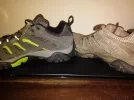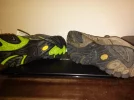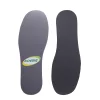Compeed Anti-Blister Stick contains:
Hydrogenated vegetable oil, Cetyl alcohol, Parfum, Linalool, Limonene, Hexyl Cinnamal, butylphenyl methylpropional, Hydroxyisohexyl 3-Cyclohexene carboxaldehyde. [all the additives are basically scents]
Crisco hydrogenated vegetable oil
Since its introduction in 1911, Crisco® has revolutionized the way food is prepared and the way it tastes. From being the first shortening product made entirely of vegetable oil to creating the first cooking oil that was promoted for its light taste, Crisco has been making life in the kitchen more delicious for years.
Sportslick was created by combining Petrolatum with Silicone for long lasting waterproof protection, then adding the leading antifungal agent, Tolnaftate with healing ingredients, Aloe, Vitamin E, C, and natural plant extracts.
Soothing Aloe, Antioxidant vitamins A and E, and other natural ingredients moisturize and rejuvenates your skin.
Created by a physician, this unique formula combines the proven antifungal (Tolnaftate) and a popular antibacterial (Triclosan) to guard against infection.
Easy to apply to your feet, legs, thigh, groin, underarms and neck, Sportslick stays where you put it! It won't come off until you wash it off with soap.Sportslick
Contains:
The leading antibacterial, Triclosan. The finest grade Petrolatum was chosen because it is the most effective lubricant available. It is used safely in hundreds of skin products and medications. It is non-comedogenic and hypoallergenic. Sportslick has been proven not to harm wetsuits or athletic equipment.
Silicone - binds to the skin for long lasting waterproof protection
Petrolatum - a proven safe lubricant and moisturizer
Polymers - for a slippery feel and a lasting glide
Tolnaftate 1% - the leading antifungal agent
Aloe - plant extract that heals and moisturizes skin
Vitamin E - antioxidant that helps Vitamin E work more effectively
Soybean Oil - plant extract that repairs and rejuvenates the skin
Natural Oil Fragrance - vanilla almond oil
Triclosan - popular antibacterial
Vaseline® Petroleum Jelly is a mixture of mineral oils, paraffin and microcrystalline waxes that, when blended together, create something remarkable - a smooth jelly that has a melting point just above body temperature. The result - it literally melts into skin, flowing into the spaces between cells and the gaps in our lipid barrier. Once there, it re-solidifies, locking itself in place.
Vaseline® Petroleum Jelly serves two functions: First it helps keep the outside world out - it protects skin from the effects of weather and exposure. Second, it acts like a sealant to help keep the inside world in - it forms an occlusive barrier to the natural water loss of our skin. So skin that is dry and chapped is protected from drying elements, enabling skin-softening moisture to build up naturally from inside the skin itself.
Bag Balm:
8 Hydroxyquinoline Sulfate (0.3% in a Petrolatum, Lanolin Base)
Hydropel:
Active Ingredient: Dimethicone 30%
Other Ingredients: Petrolatum, aluminum starch octenylsuccinate.
PICK THE ONE YOU THINK IS LIKELY TO WORK BEST!!






























